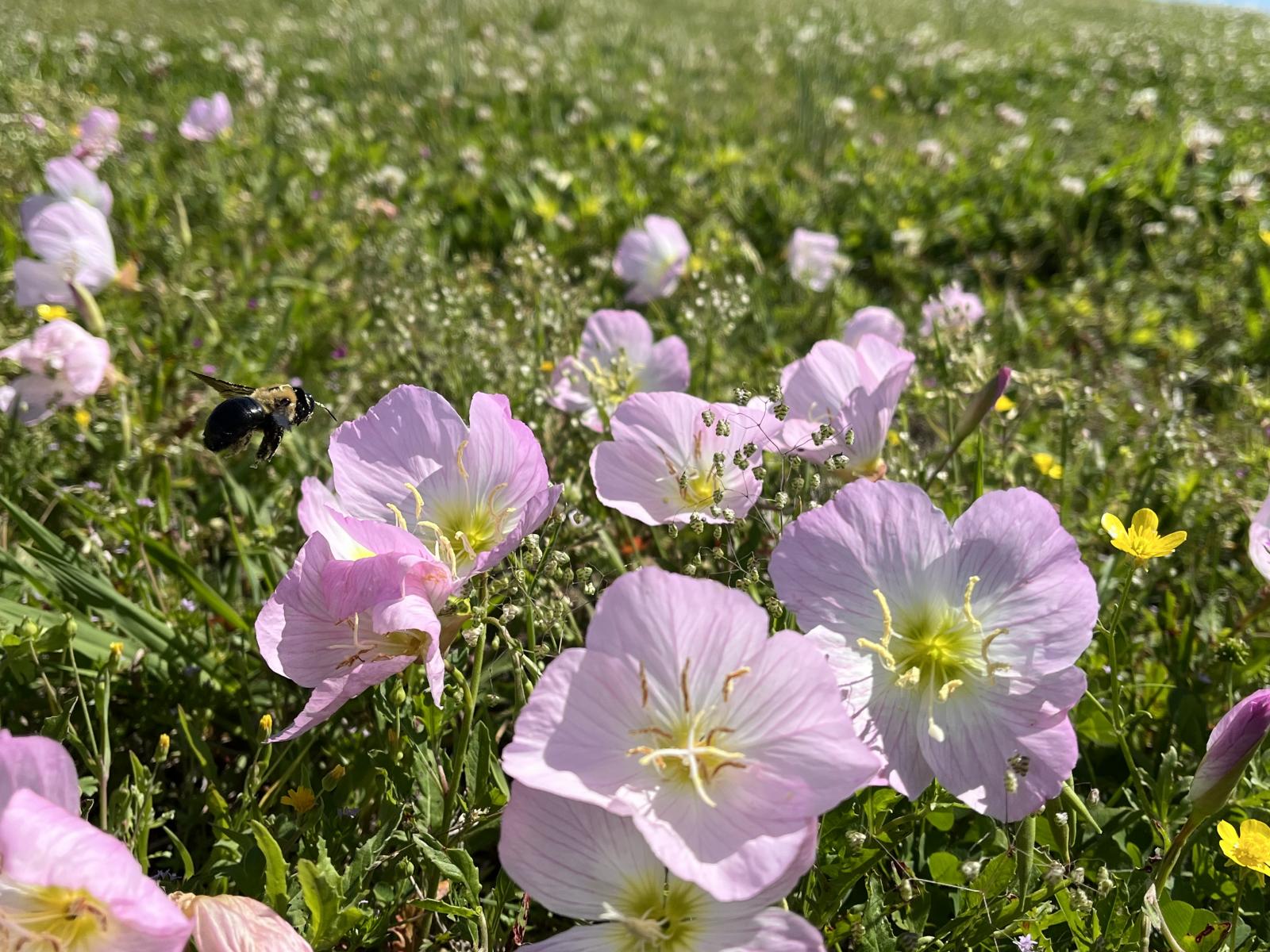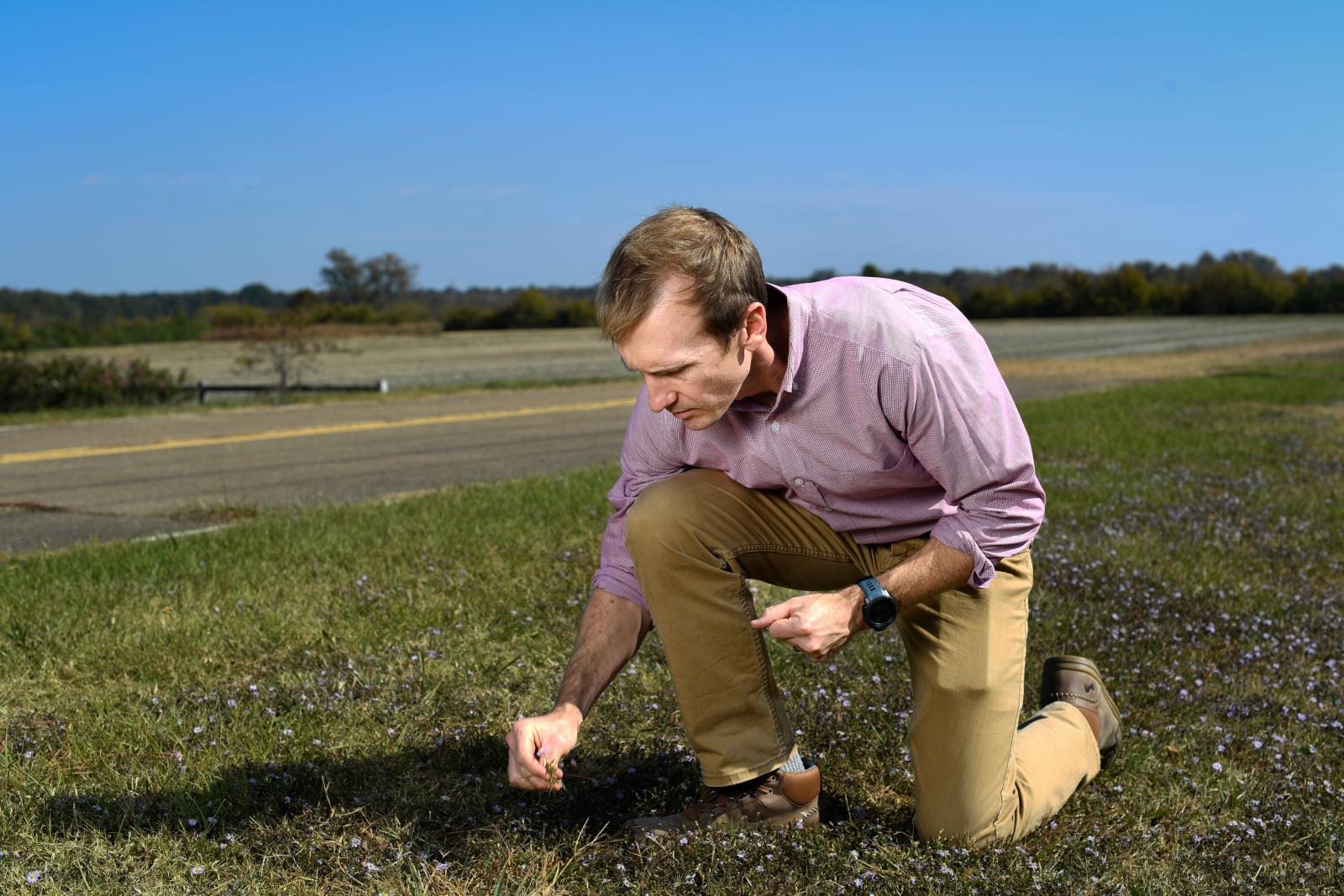MSU turfgrass expert offers lawncare advice to increase refuge for insect pollinators

Contact: Chloe Madison
STARKVILLE, Miss.—A Mississippi State turfgrass specialist is teaming up with scientists from Auburn University and the University of Georgia to advance Refuge Lawn, a project promoting pollinator-friendly lawns funded by USDA National Institute of Food and Agriculture.
MSU Extension Specialist Jay McCurdy, an associate professor in the Department of Plant and Soil Sciences, said the team studies the benefits of growing common forbs (herbaceous flowering plants) and weeds within Southeastern lawns. They also find new ways to manage turfgrass systems to better support insect pollinators.
“This project focuses on including habitat for insect visitors, whether they be pollinators or just there for a nectar reward. We aim to understand which flowers are better resources for native pollinators. Also, we aim to better understand the value of forbs and weeds within mixed lawns,” McCurdy said.
Nik Minaev, originally from Russia, is now a doctoral student majoring in agronomy under the direction of McCurdy. Minaev studies spring beauty (Claytonia virginica) and lawn aster (Symphyotrichum divaricatum), two common flowering plants native to the Southeast.

“Spring beauty blooms in early spring in parks, roadsides and some home lawns. It has pretty, light pink flowers and plays an important role in providing a food source for pollinators, as it blooms early in the spring when floral resources are scarce. Lawn aster blooms in the fall, with white, purple, lavender or pale blue flowers. It multiplies rapidly and attracts late season pollinators,” he said.
Minaev is evaluating typical home lawn herbicide programs to prevent other germinated weed seedlings from becoming established within the mixed stand of turfgrass and desirable forbs. He also is determining optimal conditions for seed propagation of spring beauty and lawn aster by developing varieties with improved seed germination.
“My research will provide insight into how to establish and manage lawns with flowering forbs,” he said.
Another MSU student on the project is Sara Kirby of Raleigh, an MSU master’s student majoring in entomology and studying native bees. She said that as urbanization grows across the U.S., pollinator habitat will continue to decline.
“By incorporating foraging and nesting habitats into our lawns, we can do our part to maintain the overall ecosystem,” she said.
Kirby is studying how effective the inclusion of flowering forbs into lawns could be at improving pollinator populations.
“Insect pollinators are invaluable to ecosystems; they are also estimated to provide one in every three bites of food we eat through crop pollination. Despite how important they are, insect pollinators have been consistently declining over the past several decades. One of the reasons for this is a lack of resources; if pollinators can’t find any flowers in bloom, they could starve. Our goal with Refuge Lawn is to identify those plants that can provide floral resources that keep pollinators alive, while adding some beautiful flowers into our green spaces,” Kirby said.
McCurdy said society can play a part in improving lawns to benefit insect pollinators.
“Many of the insects we want to attract aren’t hive forming, which means they are solitary and often live in the ground. Oftentimes, having undisrupted areas within your lawn where there is open soil is a best management practice for helping these insects. Mowing too frequently can also disrupt insect nesting sites, so mowing less is another way to benefit insect pollinators,” he said.
For more tips on how to establish a pollinator-friendly lawn and to learn more about the project, visit www.refugelawn.com.
Mississippi State University is taking care of what matters. Learn more at www.msstate.edu.